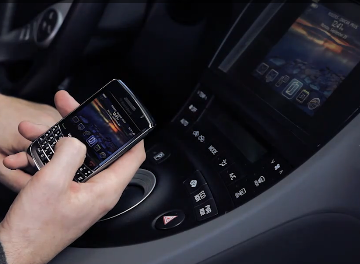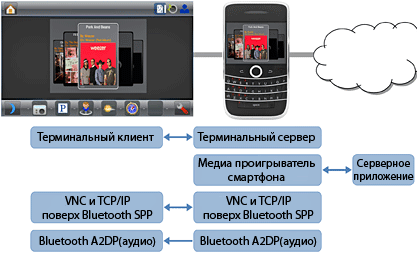MirrorLink technology in your car
 Mobile devices, such as smartphones, have enabled consumers to access a growing number of interactive and useful applications, anytime, anywhere. However, as soon as the user gets into the car, access to such applications and their capabilities is severely limited - either because there is a restriction for using some applications in car infotainment systems (IVI) or due to problems of interaction with a small screen of a mobile device connected to the docking station.
Mobile devices, such as smartphones, have enabled consumers to access a growing number of interactive and useful applications, anytime, anywhere. However, as soon as the user gets into the car, access to such applications and their capabilities is severely limited - either because there is a restriction for using some applications in car infotainment systems (IVI) or due to problems of interaction with a small screen of a mobile device connected to the docking station.For many years, corporate users have used remote terminal technologies, such as Virtual Network Computing (VNC) and Windows Remote Desktop for remote access to computers and troubleshooting. Not so long ago, the remote terminal found its niche in smartphones, where the terminal client on the phone allows the user to see and control the remote application.
In the automotive environment, the opposite is true: the smartphone becomes the server, and the car infotainment system becomes the client. TCP / IP via Bluetooth or USB, generally acts as the main communication protocol between the phone and the car, while the Bluetooth Serial Port Profile (SPP) or USB class device (USB CDC) communicates at a lower level of communication.
')
MirrorLink (formerly known as Terminal Mode) was designed to provide technology that provides a continuous connection between a smartphone and a car infotainment system. The technology is extremely simple from the point of view of the consumer. As shown in the figure, the user installs it in his car (1), connects to the phone using a USB cable (2) and can immediately use all the phone applications in the car (3).

When using VNC as a base technology, the user's car software displays a graphical user interface implemented on a smartphone. Often, user software will scale the display of the phone to fit a portion of the display in the car.
While mobile devices deliver and execute all the applications and services available to users, the car infotainment system provides the necessary input and output physical characteristics, such as a color display, speakers and microphones of the system, as well as some other user devices. input. These may include - a touchscreen display, turn knobs, a steering wheel, or additional buttons. This will allow the consumer to not only get secure access to their favorite mobile applications while driving, but also allow you to take advantage of high-performance IVI systems.
MirrorLink is described by a set of well-formed, non-proprietary standards. IP technologies are used for physical layer independence. However, traditional in-car communications solutions remain, such as Bluetooth HFP and A2DP support. MirrorLink provides support for wired and wireless communications. In addition to unrestricted access to the user interface of a mobile device, Universal Plug and Play (UPnP) is used to access only a limited number of previously announced applications.
When using the client terminal in the car, no update of the car software is required for using new smartphone applications. In addition, since the main VNC server provides a copy of the screen, for all smartphone applications you can make your user interface access in the car. VNC is also used to provide support for keyboard and touch screen events. In addition to Bluetooth, audio can be transmitted via Real-Time Protocol (RTP) over UDP.

In terminal mode, the VNC server applications of the smartphone provide a remote display of the infotainment system. Using the remote display, you can launch and manage smartphone applications.
However, simple screen and input translation cannot, by themselves, provide a user interface suitable for driving. To be useful, a smartphone application must provide a different user interface or “car mode” user interface. To maintain driver safety, the infotainment system and smartphones must work together to block applications that do not provide an “automotive mode” interface while the vehicle is moving.
Since MirrorLink allows you to use any traditional applications on a mobile device for display on a car display, you can easily develop mobile devices based on car applications using the car user interface and optimize car functionality. The technology specification is publicly available.
VNC provides support for both terminal mode and Apple iPod Out technology. Apple iPod Out allows the head unit to display the contents of an iPhone or iPod touch, including a menu of music and album art; Supports new iPod features, without changing software. At the same time, the user sees the interface already familiar to him.
Below is a video showing how the VNC, terminal mode, and QNX Neutrino RTOS work together to ensure the integration of cars and smartphones.
Using the terminal mode to establish communication with the car and mobile device.
The first, built into the car, ready for production implementation of the Apple iPod Out.
Source: https://habr.com/ru/post/134343/
All Articles